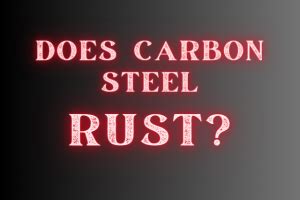Carbon steel, a ubiquitous material in construction, manufacturing, and engineering, is known for its strength, durability, and versatility. However, one of its most significant drawbacks is its susceptibility to rust, a phenomenon that can compromise its structural integrity and functionality. In this article, we will delve into the world of carbon steel, exploring its composition, properties, and the factors that contribute to its rusting, as well as discussing strategies for prevention and mitigation.
Key Points
- Carbon steel is prone to rust due to its iron content and exposure to oxygen and moisture.
- The rusting process can be accelerated by environmental factors such as high humidity, saltwater, and acidic conditions.
- Prevention and mitigation strategies include applying protective coatings, using stainless steel or galvanized steel, and implementing regular maintenance and inspection protocols.
- Understanding the causes and consequences of rust is crucial for ensuring the longevity and performance of carbon steel structures and components.
- Industry-specific standards and regulations, such as those set by the American Society for Testing and Materials (ASTM), play a vital role in guiding the selection and application of carbon steel in various contexts.
What is Carbon Steel?

Carbon steel is a type of steel alloy that contains a mixture of iron and carbon, with small amounts of other elements such as manganese, silicon, and copper. The carbon content can vary from 0.1% to 2.1%, which affects the steel’s strength, hardness, and ductility. Carbon steel is commonly classified into four main categories: low-carbon steel (0.1-0.3% carbon), medium-carbon steel (0.3-0.6% carbon), high-carbon steel (0.6-1.0% carbon), and ultra-high-carbon steel (1.0-2.1% carbon).
Why Does Carbon Steel Rust?
Rust, also known as iron oxide, is a chemical reaction that occurs when iron or its alloys, such as carbon steel, come into contact with oxygen and moisture. The rusting process involves the oxidation of iron, which leads to the formation of iron oxide, a flaky, reddish-brown substance that can weaken the metal’s structure and compromise its integrity. Carbon steel is particularly prone to rust due to its high iron content and the presence of other elements that can facilitate the rusting process.
| Factor | Description |
|---|---|
| Moisture | High humidity, rain, or exposure to water can accelerate the rusting process. |
| Oxygen | Presence of oxygen is essential for the rusting reaction to occur. |
| Salts and Acids | Exposure to saltwater, acid rain, or other corrosive substances can increase the risk of rust. |
| Temperature | High temperatures can accelerate the rusting process, while low temperatures can slow it down. |

Prevention and Mitigation Strategies

While carbon steel is inherently prone to rust, there are several strategies that can be employed to prevent or mitigate the rusting process. These include:
- Applying protective coatings, such as paint, varnish, or epoxy, to create a barrier between the metal and the environment.
- Using stainless steel or galvanized steel, which contain chromium or zinc, respectively, to provide a protective layer against corrosion.
- Implementing regular maintenance and inspection protocols to detect and address rust early on.
- Designing structures and components with rust prevention in mind, such as using drainage systems or protective shielding.
Industry-Specific Standards and Regulations
Industry-specific standards and regulations play a crucial role in guiding the selection and application of carbon steel in various contexts. For example, the American Society for Testing and Materials (ASTM) sets standards for the composition, properties, and testing of carbon steel, while the American Society of Mechanical Engineers (ASME) provides guidelines for the design and construction of carbon steel structures and components.
What is the difference between rust and corrosion?
+Rust and corrosion are often used interchangeably, but they refer to different processes. Rust is a type of corrosion that occurs when iron or its alloys react with oxygen and moisture, resulting in the formation of iron oxide. Corrosion, on the other hand, is a broader term that refers to the degradation of materials due to chemical or electrochemical reactions with their environment.
How can I prevent rust on carbon steel structures?
+To prevent rust on carbon steel structures, apply a protective coating, such as paint or varnish, and ensure regular maintenance and inspection. Additionally, consider using stainless steel or galvanized steel, which are more resistant to corrosion.
What are the consequences of rust on carbon steel structures?
+Rust can compromise the structural integrity of carbon steel structures, leading to safety hazards, equipment failure, and costly repairs. In extreme cases, rust can cause catastrophic failures, such as bridge collapses or building collapses.
In conclusion, carbon steel is a versatile and widely used material that is prone to rust due to its iron content and exposure to oxygen and moisture. By understanding the factors that contribute to rusting and implementing effective prevention and mitigation strategies, we can ensure the longevity and performance of carbon steel structures and components. As a materials engineer, it’s essential to consider the environmental factors, industry-specific standards, and regulations that guide the selection and application of carbon steel in various contexts.



